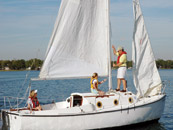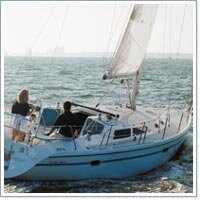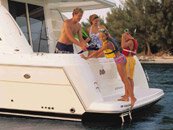Four Puff Tips
By Staff
1. Try to determine the temperature of the air relative to the temperature of the water. If, for example, a cold front moved through overnight, there is a good chance that mixing puffs will be prevalent.
2. Identify where the air that is passing over the sailing area comes from. If it originates in an area where the temperature is cooler than the water you are sailing on, mixing puffs will dominate. Remember that the sun will warm the air mass in the daytime, so air flowing over land will gradually warm through the day. Air flowing over water will heat more slowly.
3. Check the clouds. Cumulus clouds hint at mixing puffs. Stratus clouds suggest steadier wind.
4. For geographic puffs, look for upwind hills or ridges. If you are sailing very close to shore, trees and buildings can also be a source of geographic puffs.
Shared with Permission by Sailing World.


